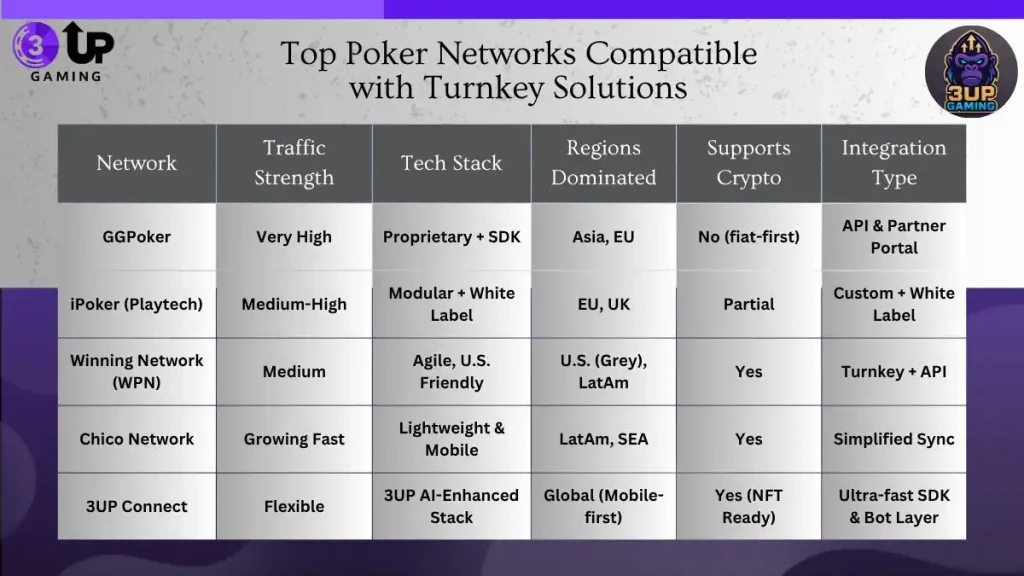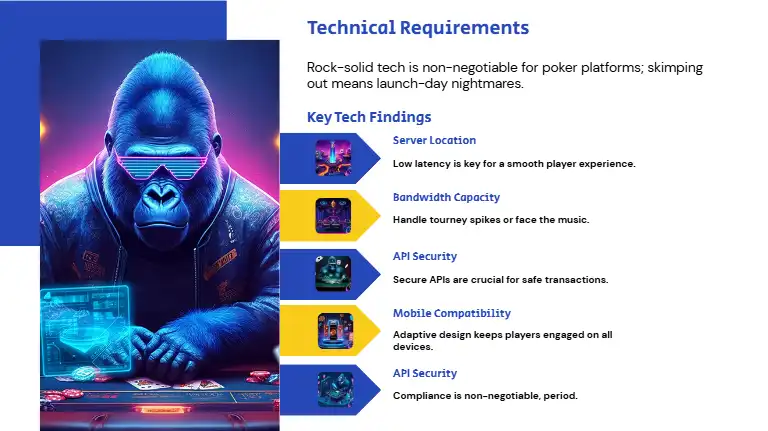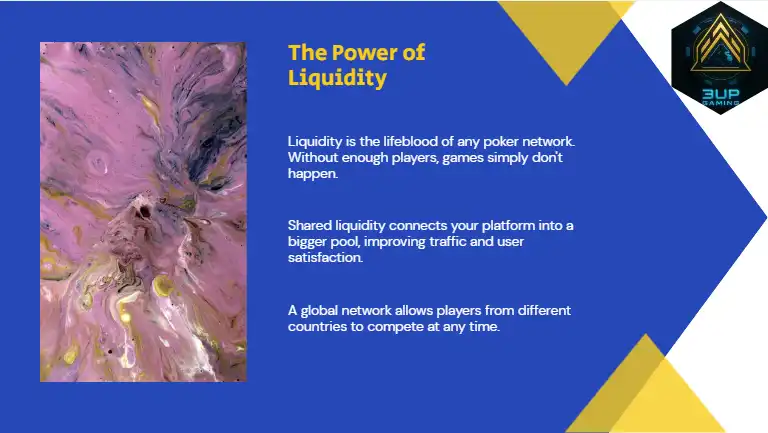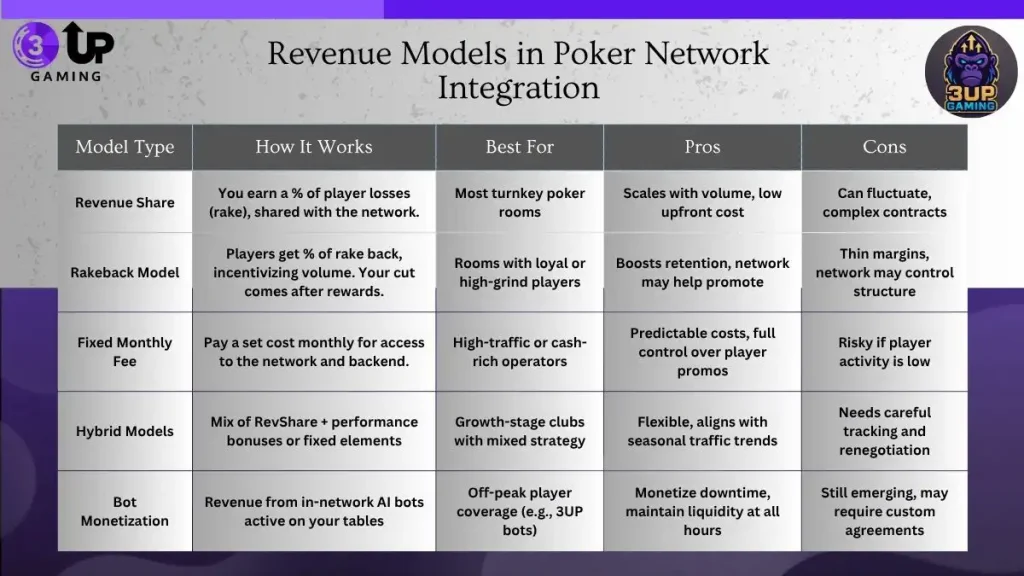How Turnkey Poker Software Integrates with Major Networks! In an overwhelmingly competitive climate, oftentimes just being alone in the poker online space does not suffice. This is why turnkey online poker software connected with big networks is a game changer, enabling start-ups and established brands to launch faster, scale smarter, and plug into a tremendous global player pool from day one.
If you happen to be an entrepreneur looking to ride the wave of iGaming, or a developer looking for a perfect harmony between front-end and back-end, integration is not an alternative but a serious consideration.
With industry leaders such as GGPoker, iPoker, and Winning Network already enabling integration-friendly frameworks, the path is clear; the key, however, is understanding how to connect, what benefits to unlock, and how to maintain your brand identity in a shared environment.
This tutorial will walk you through the entire process, from simple technical checklists to real-world network profits, giving you everything you need to develop a winning poker platform that can compete on a worldwide scale. Let’s make your brand more connected and competitive.
What Is Turnkey Poker Software Integration?
Now, turnkey poker software integration is the process of connecting a poker platform like that of 3UP Gaming’s white label system to a poker network already built in this continuously changing world of online gaming.
Plug-and-Play Platforms
Instead of developing everything from scratch: backend infrastructure, even liquidity management, all from the ground up, this plug-and-play distance-integrating solution within the larger poker-active ecosystem offers a gateway into a more comprehensive and active gaming environment.
Consider publishing your music on Spotify rather than constructing your own app; you’re leveraging a proven infrastructure, a large audience, and, as if by magic, monetization mechanisms. A standalone poker site can carry only so far with fewer players and traffic isolation.
Networked Ecosystems
However, poker software integration enables users to share player pools, tournaments across networks, as well as capitalization on instant traffic liquidity. This is the magic model by which success stories are made: Stake’s ecosystem saw its poker business snapped like a million-dollar selfie after teaming up with third-party developers, while GGPoker’s network model has placed several independent poker rooms under its umbrella.
For this, integration features some technicalities, even though many new entrants and small operators would see the integration as an economic magnifier, social gateway, and ramp onto growth.
Use AI-powered bots and mobile-first tools to engage and retain players 24/7.
Capture what you need with: The Top 10 Poker Apps
Want smarter decisions? Bitcoin Poker UI Wins Big in 2025
Benefits of Joining a Major Poker Network
When you join a large poker network through turnkey software, you never simply add a function. You gain ground reshaping your growth curve. Here are the five top reasons why network integrations are totally the game-changers:
- Player Liquidity: Tap into thousands of activated users every day; no more empty tables
- Reduced Operational Costs: Share infrastructure, support, and game logic with the network
- Accelerated Growth: Access instantly marketing funnels, tournaments, and traffic streams
- Shared Technology Stack: Backend upgrades, anti-cheat systems, and mobile innovations
- Regulatory Support: The network’s compliance structure, including licenses and legal coverage
Networks like GGPoker, iPoker, and Chico have an awful lot in common in a collaborative and well-padded backend. If you’ve followed the tech that content creators and broadcasters like Lex Veldhuis have addressed, you’ll know that platforms without liquidity rarely endure community reigns supreme.
Strong testimony to that is TrueGeordie’s very own experience whereby his integration with a live tournament network managed to quadruple his poker stream engagement compared to solo tables.
Joining a poker network is definitely not just a backend decision for scalability but rather how you scale your community, keep serious players engaged, and create a strong and returning brand. Whether it’s a crypto poker platform you’re about to build or a traditional room, good networks can carry you where solo play won’t.
Top Poker Networks Compatible with Turnkey Solutions
Integrating poker networks is just like creating profitable partnerships; the difference between slow traction and explosive growth is the right partner. Whether you want high-stakes glamour, focus on mobile players, or crypto-fueled ecosystems, the big poker networks provide distinctly flavored traffic, tools, and territories.
Here’s a quick rundown on the key players:

The operators aiming toward crypto-savvy markets lean toward WPN or Chico, while those into regulated spaces may like iPoker. 3UP Connect offers something unique with hybrid AI-bot systems and fast integration options, allowing a white label site to go live in weeks as opposed to months.
In LATAM, several indie platforms saw 5x player retention in the Chico network, proving that the right network can unleash local growth. Whether you are looking for a Twitch-powered launch or something regionally compliant, now is the time to choose your partnership over.
Ask us how your poker idea can be plugged into real traffic today.
Learn the difference: Customizable Standalone Poker
This connects to: 2025 Complete Buyer’s Guide
Step-by-Step Integration Process Explained
The highest obstacle for operators in most cases is tech fear. But with present solutions, like the infrastructure of 3UP Gaming, there is no reliance on developing codes within a week to create a poker software that integrates with a major network; instead, it is rolled out over time as shown in here: System Integration Plan.
Integration Timeline (Days 1–30)
Day 1-3: Platform Scoping & Compliance Prep
Day 4-7: API Access Issued & Initial Sandbox Setup
Day 8-14: Face Branding & Payment Gateway Sorting
Day 15-20: Player Bot & UI Layer Integration
Day 21-25: Final QA, Load Testing & Regulatory Review
Day 26-30: Launch with Monitoring & Live Optimization
This kind of turnkey poker feels even closer to starting a store on Shopify than building the tech stack from scratch. The majority of onboarding does not require manual effort, or even preconfigured, especially when comparing it to legacy systems that had manual syncing delaying setups for months.
Classic instance is that of a newly established poker room in India which went live in fourteen days after sign-off, fully integrated and having its first crypto-compatible tournament. The question now is no longer “Can you do this?” but, “How soon can we start?”
Read this next: What is NFT in Poker?
Technical Requirements for Seamless Integration

Your entire setup should be out of the box, up and running, scaled, and secure before even one card finds its way to the digital felt. Neglecting sweet Fanny Adams sets you up for glitches, downtime, and failed launches; every new operator’s nightmare. While most turnkey poker providers will get you through such a checklist, here is what you need up front:
Poker Integration Requirements Checklist
- Server Location: Low latency with respect to target audience
- Bandwidth Capacity: Scalable for high concurrency (especially tourney spikes!)
- API Specifications: RESTful or WebSocket support with secure key exchange
- Mobile UI Compatibility: Adaptive design for iOS, Android, tablets
- Security Certifications: SSL/TLS, anti-fraud, encryption standard
UKGC and Malta Gaming Authority expect these tech certs as basic for compliance, while newborns enjoying Web3 cloud solutions (with Polygon or Solana backends) must ensure wallet and contract syncing at scale.
The on-ground repercussions: A poker application that did not invest in throttling infrastructure lost 20 percent of launch-week traffic to slow-loading lobbies and never recovered that trust thereafter.
Your technology is the table; don’t show up with a wobbly design.
Dig deeper into: Launch in Days
Player Pool Sharing and Cross-Network Traffic
The secret ingredient for success for any poker network? Liquidity. Without liquidity, your players sit in empty lobbies. With liquidity, they jump straight into the action, climb the leaderboards, and take others along with them. This is what shared poker liquidity and cross-network traffic can accomplish.
Global Liquidity Boost

As traffic runs through your platform, it becomes your superpower. A player in Brazil can be seated at the same table with one in Germany and one in Japan-all in seconds. PokerStars demonstrated this when it combined France, Spain, and Portugal into an EU liquidity pool, tripling table availability overnight.
Dynamic Matchmaking
From Stake to regulating zones, the innovation of proxy-based systems has allowed counter measures for cross-border liquidity. After the Asia-EU liquidity was brought together, a spurt in Short Deck traffic on GGPoker turned it from a niche variant to a flagship game.
More players = more hands = more rake.
It’s more than simply matchmaking; it’s also real-time market scaling.
Own your poker with 3UP Gaming – scale up smart, earn more, and never announce from scratch ever.
Boost your game with: Top Crypto Poker Provider
Backend Synchronization with Network Infrastructure
When a poker platform goes live, it is backend harmony that makes sure it doesn’t just look good on the surface with flashy UI or avatars and into the thick of real-time synchronization of servers with the network’s core infrastructure to ensure game integrity, wallet accuracy, and uniformity of logs.
Data Sync, Game Logs, Wallet Mirroring
A successful sync encompasses three key areas:
- Game Logs: Every hand, fold, and all-in tracked at each of the servers
- Wallet Mirroring: Immediate balance updates between skins, network, and app.
- Event Handlers: Updates for promos, tourneys, and in-game events are dynamic.
3UP Gaming, for example, runs mirrored wallets to prevent wallet desync, which is a significant upgrade over older “hub-and-spoke” systems, where central failures caused payment delays and dropouts. Imagine using Uber where your payment, GPS, and ride data don’t match. That’s what poor backend sync feels like in poker.
Real-world failure: A high-traffic poker event in Canada collapsed mid-tourney due to unsynced logs and frozen wallets, shaking user trust overnight.
Backend syncing isn’t sexy, but it’s what makes real money games actually work.
Modify your tables, synchronize your players – we will take care of the backend, but the experience is yours.
Easy road that you build? White Label Poker Software Solutions
Grasp more of: How to Play Poker with Cryptocurrency
Revenue Models and Profit Sharing in Network Integration
Of course, while associating with a poker network of considerable size isn’t free in any way, with accurate revenue streams, it stands as one of the best investments for growth. The main issue revolves around profits sharing, as well as having conditions that are favorable to your player base, marketing capacity, and long-term goals.

Key for everything from promo deals to cashout margins is – Networks; like 3UP Gaming come with hybrid revshare and bot monetization solutions so that they can give you revenue sharing not only on user activity but also on artificial intelligence involvement during the sleepless hours.
Pro tip: Ask what is included: services, technology upgrades, and marketing enhancements.
Sample from real life: One poker company on Twitch saw a big upswing in registrations because of a viral stream.
But because of a lousy revshare model, 70 percent of their income went to the network, after which they closed up within three months. Well-planned now translates in quality sustainability, later on, for scaling. Your poker room needs to be hooked for a deal to play for you.
Walk on the line by: Best Poker Practice Apps
More on that in Everything About Poker Apps
Compliance, Licensing, and Legal Considerations
Executing a poker platform is almost both on legal compliance and on the design of the game. When integrating through a white label or when developing a key solution, ignoring licenses and regulations can derail your business. From knowing the controls of your client (KYC) to protocols against money laundering (AML), the legal framework surrounding the integration of the poker is extensive and mandatory.
Operators should consider their accommodation jurisdiction, age restriction policies, data protection laws (such as GDPR), and if their platform admits fiduciary currency options, cryptography or hybrid payment.
With respect to crypto-compatible networks, bets are higher: the regulators of the United Kingdom and Malta have provided their most recent updates that clarify their position on the problems surrounding digital currencies and the transparency of the wallet.
As for the United States, the expansion of poker regulation at the state level (for example, Michigan, Pennsylvania) makes the localized license crucial. Similarly, if it is addressed to European users, compliance with tax reports, players segregation laws and, often, specific compliance audits of the region will be essential.
Legal verification list in a few words
- Acquisition of licenses (for example, UKGC, MGA, Curacao, State at the US level.)
- Make 18+ (or 21+) age limit
- Strong workflows from KYC and AML are implemented
- User data management complies with GDPR
- Allow only cryptographic wallets that meet
- Tax presentations according to jurisdiction
Example of the real world: in 2023, the MGA of Malta imposed fines that amount to more than $250,000 and access to the market revenue throughout the EU to several platforms that operate under the Curacao license for not informing about cryptographic bets in the shared network.
Building with compliance in mind is not only clever, but also necessary for life.
Implement your poker approach at an accelerated pace – all through the turnkey platform of 3UP.
Don’t miss this: Poker Software Pricing Plans
Explore further: Your Gateway to Gaming Biz
Common Challenges and How to Overcome Them
Poker integration certainly offers lots of zing and zot in all such gadgets, software, and the like; however, alongside promise comes the need for immense adjustment.
Novices to the scene very often feel too comfortable, assuming that the turnkey model will suffice. Without a good custom design to be thrust from end to end down to the bottom, they soon get bombarded by issues that could arise from a degree of design or another.
This may entail a myriad of technical issues, among which latency is the most current. A game without able region-optimized servers and dynamic Management would surely suffer to the highest degree during peak times. Besides that, running relatively few platforms with identical cookie-cut interfaces can destroy their identity and overall image.
Bad data handling, from wrongly aligned logs to wallet synchronization issues, cause complete interference with payouts or player records. In short, make sure to know all your contracts and the consequences. The revenue-share arrangements, while looking to be quite decent in the calculations, contain hidden fees and inflexibility that come back to haunt them.
Five issues you might stumble upon; with pro-tips:
1. Laggy games → Go edge-fast-cloud hosting
2. Stiff look & feel → Buy UI skins that look branded.
3. Problems in transactions → Plan weekly backend audits
4. One-sided deals → Get legal counsel to scrutinize the fine print
5. Loosening network policy → Look for those platforms with open change logs
A well-known reality is the online poker room, which has the backing of Twitch and saw 70% margin erosion because of obscure revenue-splits and UI customization issues. This way, they had traffic but lost leverage in one go.
Integration is powerful, but it requires independence from your own identity, operations, and legal standing.
Read more about: for Android and iOS
Find your time with: Poker Sites That Accept Bitcoin
FAQs
1. What is a poker network in the context of turnkey software?
A poker network is an ecosystem composed of different poker platforms that provide connectivity to a central system with shared player liquidity, game types, infrastructure, brand and sometimes. In turnkey software, this means that your platform now gets plugged directly into an existing backend, instead of building such systems from scratch, allowing your users to compete in real time with players from other sites so connected.
2. Why should I integrate my platform with a major network?
Joining a big poker network means that you will get instant access to a vast active user base as well as powerful infrastructure and regulatory mechanisms built into the application. It fast-tracks growth, boosts engagement, and allows you to focus on brand-community-monetization instead of reinventing the tech wheel.
3. How long does the integration process usually take?
Standard turnkey poker integration can take between 1-4 weeks depending on the type of customizations you require, your branding needs, and the type of backend setup you’ve chosen. Other networks have speedy sign-ups (under 7 days), especially when it comes to white label solutions like 3UP Connect that make sync between frontend and network APIs easier.
4. Will I get access to an existing player base through a network?
Indeed. The main reason people go into a poker network is shared liquidity-to be joined by a whole lot of players into already active lobbies-faster games and more opponents with stronger tournament availability. This is like setting up a club within an already crowded casino floor.
5. Are there additional costs for network integration?
Though the core software comes turnkey, networks tend to impose fees in various forms such as revenue share, licensing costs, or technical support retainers. Make sure to clarify whether the price is fixed, commission-based, or hybrid-and further check if there is an add-on like crypto support or AI player bots.
6. Can I maintain my brand identity while being part of a network?
Very much so. Most of the big networks will allow different branded frontends, customizable user flows and localized UX. This means that you can deliver an even more unique experience under your logo while benefiting from shared infrastructure under the hood especially if you will be focused on skin-level customization during setup.
7. What if the network changes its rules or software protocols?
Usually networks will notify ahead regarding major updates, though it is also best to be privy about change logs and have an open line of communication with their technical team. As much as subvention and developer-friendly networks like 3UP Gaming will encourage reduced risk of disruptive surprises.
8. Is integration reversible if I want to leave the network later?
In most situations, yes-but it largely depends on what your contract says. Some networks would have grace periods during which you can exit and pass on your data; others get rather stingy regarding the portability of your player database. Map out your long-term course before signing anything and include “get out of jail free” clauses there just in case you want to maintain some flexibility in the future.



